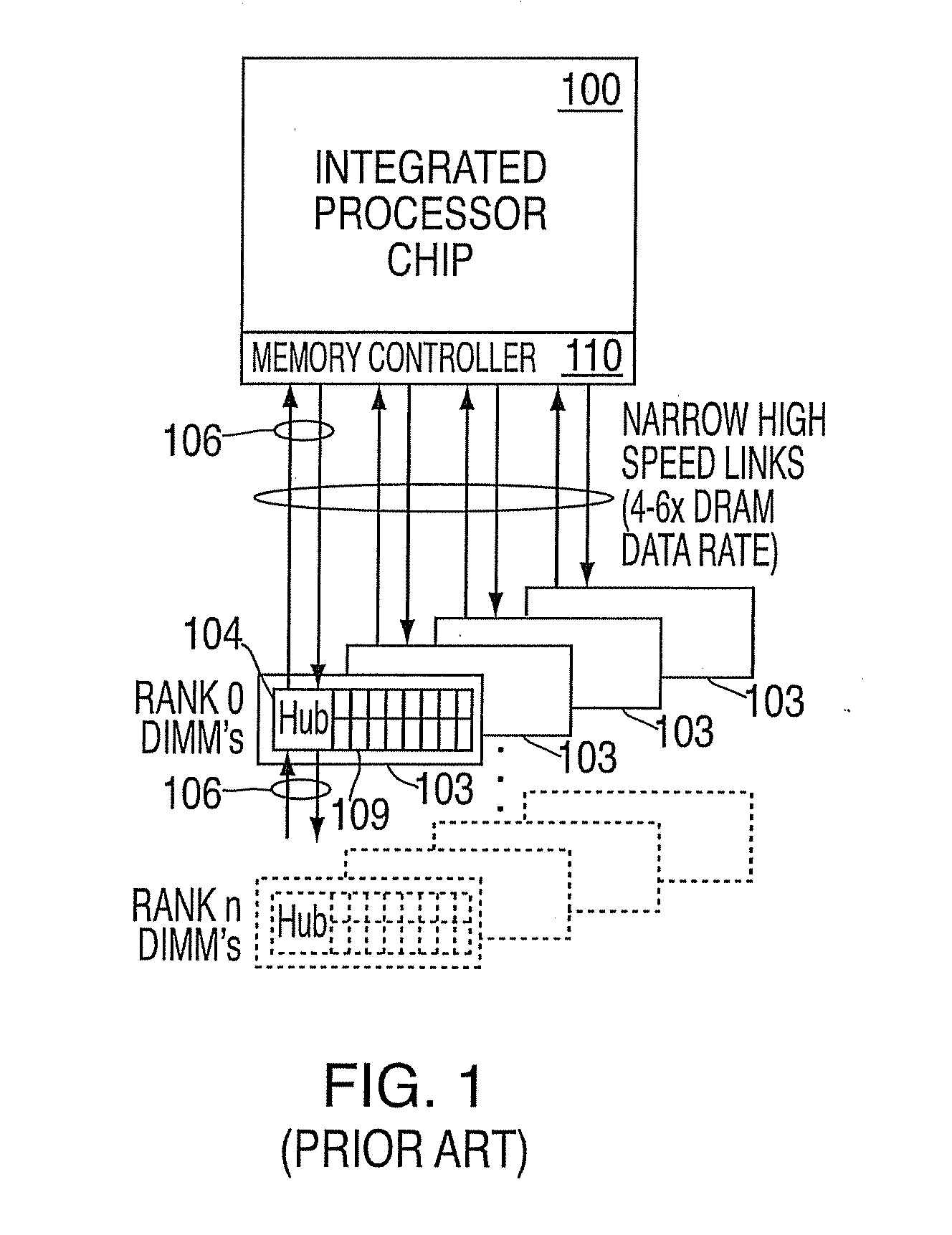System and method for providing a high fault tolerant memory system
a memory system and high fault tolerance technology, applied in the field of computer memory, can solve the problems of data loss when the computer system is powered off, random access memory, and inability to fit all the programs and information utilized by the computer system,
- Summary
- Abstract
- Description
- Claims
- Application Information
AI Technical Summary
Benefits of technology
Problems solved by technology
Method used
Image
Examples
Embodiment Construction
[0037]An exemplary embodiment of the present invention provides transparent recovery and full on-line concurrent DIMM repair for computer memory systems comprised of RAM devices (e.g., DRAM, SDRAM, etc.). Transparent recovery for up to a complete memory subsystem (e.g., a DIMM) failure coincident with another memory chip failure is provided while still allocating one or more memory devices as spare memory devices. Exemplary embodiments utilize a node structure for the computer system RAM in conjunction with an innovative application of ECC that enables any memory node to be powered down without loss of access to the required system data stored in RAM. As such, the computer system memory continues to run unimpaired, providing full access to all data stored in RAM, just as if all the memory nodes are present, powered-on and fully operational.
[0038]As used herein, the term memory node refers to the collection of all DIMMS associated with a single logical column. Often, but not always, ...
PUM
 Login to View More
Login to View More Abstract
Description
Claims
Application Information
 Login to View More
Login to View More - R&D
- Intellectual Property
- Life Sciences
- Materials
- Tech Scout
- Unparalleled Data Quality
- Higher Quality Content
- 60% Fewer Hallucinations
Browse by: Latest US Patents, China's latest patents, Technical Efficacy Thesaurus, Application Domain, Technology Topic, Popular Technical Reports.
© 2025 PatSnap. All rights reserved.Legal|Privacy policy|Modern Slavery Act Transparency Statement|Sitemap|About US| Contact US: help@patsnap.com



